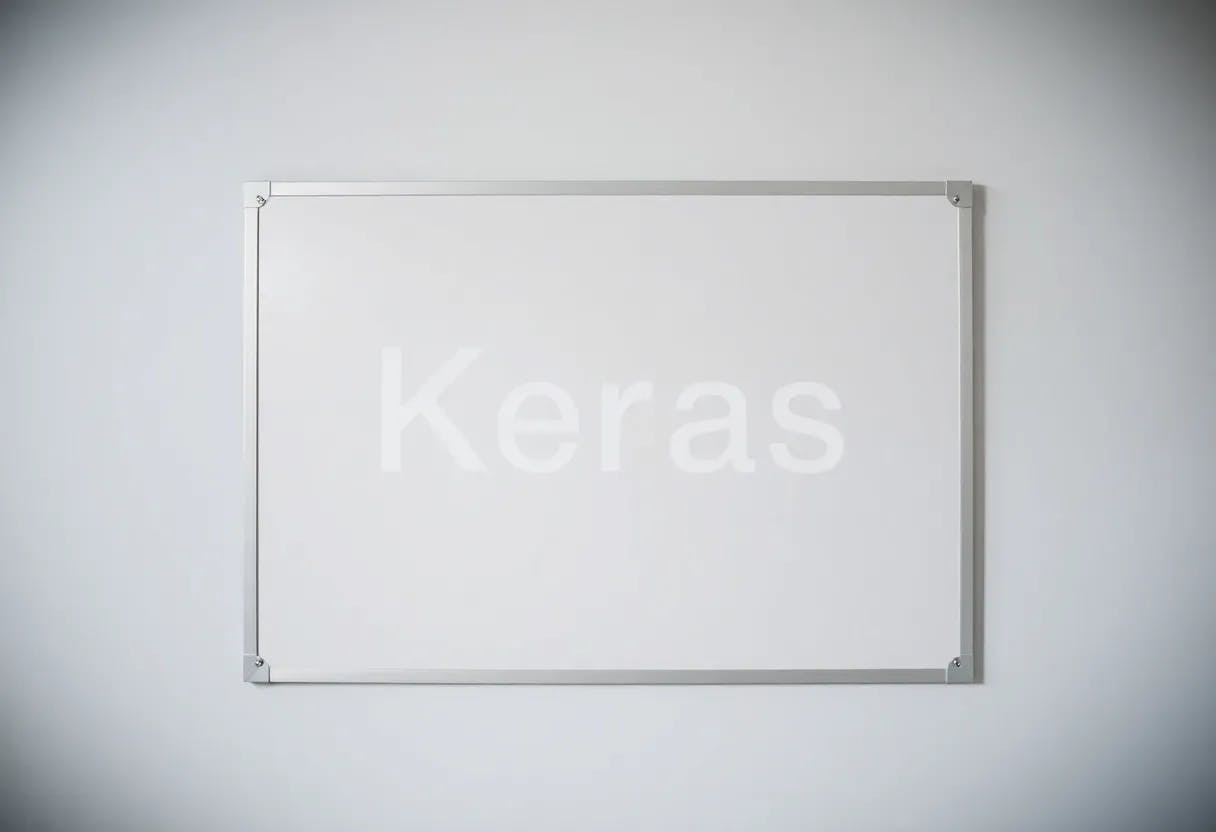Content Overview
- Introduction
- Setup
- A first simple example
- Going lower-level
- Supporting sample_weight & class_weight
- Providing your own evaluation step
- Wrapping up: an end-to-end GAN example
Introduction
When you’re doing supervised learning, you can use fit() and everything works smoothly.
When you need to write your own training loop from scratch, you can use the GradientTape and take control of every little detail.
But what if you need a custom training algorithm, but you still want to benefit from the convenient features of fit(), such as callbacks, built-in distribution support, or step fusing?
A core principle of Keras is progressive disclosure of complexity. You should always be able to get into lower-level workflows in a gradual way. You shouldn’t fall off a cliff if the high-level functionality doesn’t exactly match your use case. You should be able to gain more control over the small details while retaining a commensurate amount of high-level convenience.
When you need to customize what fit() does, you should override the training step function of the Model class. This is the function that is called by fit() for every batch of data. You will then be able to call fit() as usual — and it will be running your own learning algorithm.
Note that this pattern does not prevent you from building models with the Functional API. You can do this whether you’re building Sequential models, Functional API models, or subclassed models.
Let’s see how that works.
Setup
Requires TensorFlow 2.8 or later.
import tensorflow as tf
from tensorflow import keras
A first simple example
Let’s start from a simple example:
- We create a new class that subclasses
keras.Model. - We just override the method
train_step(self, data). - We return a dictionary mapping metric names (including the loss) to their current value.
The input argument data is what gets passed to fit as training data:
- If you pass Numpy arrays, by calling
fit(x, y, ...), thendatawill be the tuple(x, y) - If you pass a
tf.data.Dataset, by callingfit(dataset, ...), thendatawill be what gets yielded bydatasetat each batch.
In the body of the train_step method, we implement a regular training update, similar to what you are already familiar with. Importantly, we compute the loss via self.compute_loss(), which wraps the loss(es) function(s) that were passed to compile().
Similarly, we call metric.update_state(y, y_pred) on metrics from self.metrics, to update the state of the metrics that were passed in compile(), and we query results from self.metrics at the end to retrieve their current value.
class CustomModel(keras.Model):
def train_step(self, data):
# Unpack the data. Its structure depends on your model and
# on what you pass to `fit()`.
x, y = data
with tf.GradientTape() as tape:
y_pred = self(x, training=True) # Forward pass
# Compute the loss value
# (the loss function is configured in `compile()`)
loss = self.compute_loss(y=y, y_pred=y_pred)
# Compute gradients
trainable_vars = self.trainable_variables
gradients = tape.gradient(loss, trainable_vars)
# Update weights
self.optimizer.apply_gradients(zip(gradients, trainable_vars))
# Update metrics (includes the metric that tracks the loss)
for metric in self.metrics:
if metric.name == "loss":
metric.update_state(loss)
else:
metric.update_state(y, y_pred)
# Return a dict mapping metric names to current value
return {m.name: m.result() for m in self.metrics}
Let’s try this out:
import numpy as np
# Construct and compile an instance of CustomModel
inputs = keras.Input(shape=(32,))
outputs = keras.layers.Dense(1)(inputs)
model = CustomModel(inputs, outputs)
model.compile(optimizer="adam", loss="mse", metrics=["mae"])
# Just use `fit` as usual
x = np.random.random((1000, 32))
y = np.random.random((1000, 1))
model.fit(x, y, epochs=3)
Epoch 1/3
32/32 [==============================] - 3s 2ms/step - loss: 1.6446
Epoch 2/3
32/32 [==============================] - 0s 2ms/step - loss: 0.7554
Epoch 3/3
32/32 [==============================] - 0s 2ms/step - loss: 0.3924
<keras.src.callbacks.History at 0x7fef5c11ba30>
Going lower-level
Naturally, you could just skip passing a loss function in compile(), and instead do everything manually in train_step. Likewise for metrics.
Here’s a lower-level example, that only uses compile() to configure the optimizer:
- We start by creating
Metricinstances to track our loss and a MAE score (in__init__()). - We implement a custom
train_step()that updates the state of these metrics (by callingupdate_state()on them), then query them (viaresult()) to return their current average value, to be displayed by the progress bar and to be pass to any callback. - Note that we would need to call
reset_states()on our metrics between each epoch! Otherwise callingresult()would return an average since the start of training, whereas we usually work with per-epoch averages. Thankfully, the framework can do that for us: just list any metric you want to reset in themetricsproperty of the model. The model will callreset_states()on any object listed here at the beginning of eachfit()epoch or at the beginning of a call toevaluate().
class CustomModel(keras.Model):
def __init__(self, *args, **kwargs):
super().__init__(*args, **kwargs)
self.loss_tracker = keras.metrics.Mean(name="loss")
self.mae_metric = keras.metrics.MeanAbsoluteError(name="mae")
def train_step(self, data):
x, y = data
with tf.GradientTape() as tape:
y_pred = self(x, training=True) # Forward pass
# Compute our own loss
loss = keras.losses.mean_squared_error(y, y_pred)
# Compute gradients
trainable_vars = self.trainable_variables
gradients = tape.gradient(loss, trainable_vars)
# Update weights
self.optimizer.apply_gradients(zip(gradients, trainable_vars))
# Compute our own metrics
self.loss_tracker.update_state(loss)
self.mae_metric.update_state(y, y_pred)
return {"loss": self.loss_tracker.result(), "mae": self.mae_metric.result()}
@property
def metrics(self):
# We list our `Metric` objects here so that `reset_states()` can be
# called automatically at the start of each epoch
# or at the start of `evaluate()`.
# If you don't implement this property, you have to call
# `reset_states()` yourself at the time of your choosing.
return [self.loss_tracker, self.mae_metric]
# Construct an instance of CustomModel
inputs = keras.Input(shape=(32,))
outputs = keras.layers.Dense(1)(inputs)
model = CustomModel(inputs, outputs)
# We don't pass a loss or metrics here.
model.compile(optimizer="adam")
# Just use `fit` as usual -- you can use callbacks, etc.
x = np.random.random((1000, 32))
y = np.random.random((1000, 1))
model.fit(x, y, epochs=5)
Epoch 1/5
32/32 [==============================] - 0s 2ms/step - loss: 0.3240 - mae: 0.4583
Epoch 2/5
32/32 [==============================] - 0s 2ms/step - loss: 0.2416 - mae: 0.3984
Epoch 3/5
32/32 [==============================] - 0s 2ms/step - loss: 0.2340 - mae: 0.3919
Epoch 4/5
32/32 [==============================] - 0s 2ms/step - loss: 0.2274 - mae: 0.3870
Epoch 5/5
32/32 [==============================] - 0s 2ms/step - loss: 0.2197 - mae: 0.3808
<keras.src.callbacks.History at 0x7fef3c130b20>
Supporting sample_weight & class_weight
You may have noticed that our first basic example didn’t make any mention of sample weighting. If you want to support the fit() arguments sample_weight and class_weight, you’d simply do the following:
- Unpack
sample_weightfrom thedataargument - Pass it to
compute_loss&update_state(of course, you could also just apply it manually if you don’t rely oncompile()for losses & metrics) - That’s it.
class CustomModel(keras.Model):
def train_step(self, data):
# Unpack the data. Its structure depends on your model and
# on what you pass to `fit()`.
if len(data) == 3:
x, y, sample_weight = data
else:
sample_weight = None
x, y = data
with tf.GradientTape() as tape:
y_pred = self(x, training=True) # Forward pass
# Compute the loss value.
# The loss function is configured in `compile()`.
loss = self.compute_loss(
y=y,
y_pred=y_pred,
sample_weight=sample_weight,
)
# Compute gradients
trainable_vars = self.trainable_variables
gradients = tape.gradient(loss, trainable_vars)
# Update weights
self.optimizer.apply_gradients(zip(gradients, trainable_vars))
# Update the metrics.
# Metrics are configured in `compile()`.
for metric in self.metrics:
if metric.name == "loss":
metric.update_state(loss)
else:
metric.update_state(y, y_pred, sample_weight=sample_weight)
# Return a dict mapping metric names to current value.
# Note that it will include the loss (tracked in self.metrics).
return {m.name: m.result() for m in self.metrics}
# Construct and compile an instance of CustomModel
inputs = keras.Input(shape=(32,))
outputs = keras.layers.Dense(1)(inputs)
model = CustomModel(inputs, outputs)
model.compile(optimizer="adam", loss="mse", metrics=["mae"])
# You can now use sample_weight argument
x = np.random.random((1000, 32))
y = np.random.random((1000, 1))
sw = np.random.random((1000, 1))
model.fit(x, y, sample_weight=sw, epochs=3)
Epoch 1/3
32/32 [==============================] - 0s 2ms/step - loss: 0.1298
Epoch 2/3
32/32 [==============================] - 0s 2ms/step - loss: 0.1179
Epoch 3/3
32/32 [==============================] - 0s 2ms/step - loss: 0.1121
<keras.src.callbacks.History at 0x7fef3c168100>
Providing your own evaluation step
What if you want to do the same for calls to model.evaluate()? Then you would override test_step in exactly the same way. Here’s what it looks like:
class CustomModel(keras.Model):
def test_step(self, data):
# Unpack the data
x, y = data
# Compute predictions
y_pred = self(x, training=False)
# Updates the metrics tracking the loss
self.compute_loss(y=y, y_pred=y_pred)
# Update the metrics.
for metric in self.metrics:
if metric.name != "loss":
metric.update_state(y, y_pred)
# Return a dict mapping metric names to current value.
# Note that it will include the loss (tracked in self.metrics).
return {m.name: m.result() for m in self.metrics}
# Construct an instance of CustomModel
inputs = keras.Input(shape=(32,))
outputs = keras.layers.Dense(1)(inputs)
model = CustomModel(inputs, outputs)
model.compile(loss="mse", metrics=["mae"])
# Evaluate with our custom test_step
x = np.random.random((1000, 32))
y = np.random.random((1000, 1))
model.evaluate(x, y)
32/32 [==============================] - 0s 1ms/step - loss: 0.9028
0.9028095006942749
Wrapping up: an end-to-end GAN example
Let’s walk through an end-to-end example that leverages everything you just learned.
Let’s consider:
- A generator network meant to generate 28x28x1 images.
- A discriminator network meant to classify 28x28x1 images into two classes (“fake” and “real”).
- One optimizer for each.
- A loss function to train the discriminator.
from tensorflow.keras import layers
# Create the discriminator
discriminator = keras.Sequential(
[
keras.Input(shape=(28, 28, 1)),
layers.Conv2D(64, (3, 3), strides=(2, 2), padding="same"),
layers.LeakyReLU(alpha=0.2),
layers.Conv2D(128, (3, 3), strides=(2, 2), padding="same"),
layers.LeakyReLU(alpha=0.2),
layers.GlobalMaxPooling2D(),
layers.Dense(1),
],
name="discriminator",
)
# Create the generator
latent_dim = 128
generator = keras.Sequential(
[
keras.Input(shape=(latent_dim,)),
# We want to generate 128 coefficients to reshape into a 7x7x128 map
layers.Dense(7 * 7 * 128),
layers.LeakyReLU(alpha=0.2),
layers.Reshape((7, 7, 128)),
layers.Conv2DTranspose(128, (4, 4), strides=(2, 2), padding="same"),
layers.LeakyReLU(alpha=0.2),
layers.Conv2DTranspose(128, (4, 4), strides=(2, 2), padding="same"),
layers.LeakyReLU(alpha=0.2),
layers.Conv2D(1, (7, 7), padding="same", activation="sigmoid"),
],
name="generator",
)
Here’s a feature-complete GAN class, overriding compile() to use its own signature, and implementing the entire GAN algorithm in 17 lines in train_step:
class GAN(keras.Model):
def __init__(self, discriminator, generator, latent_dim):
super().__init__()
self.discriminator = discriminator
self.generator = generator
self.latent_dim = latent_dim
self.d_loss_tracker = keras.metrics.Mean(name="d_loss")
self.g_loss_tracker = keras.metrics.Mean(name="g_loss")
def compile(self, d_optimizer, g_optimizer, loss_fn):
super().compile()
self.d_optimizer = d_optimizer
self.g_optimizer = g_optimizer
self.loss_fn = loss_fn
def train_step(self, real_images):
if isinstance(real_images, tuple):
real_images = real_images[0]
# Sample random points in the latent space
batch_size = tf.shape(real_images)[0]
random_latent_vectors = tf.random.normal(shape=(batch_size, self.latent_dim))
# Decode them to fake images
generated_images = self.generator(random_latent_vectors)
# Combine them with real images
combined_images = tf.concat([generated_images, real_images], axis=0)
# Assemble labels discriminating real from fake images
labels = tf.concat(
[tf.ones((batch_size, 1)), tf.zeros((batch_size, 1))], axis=0
)
# Add random noise to the labels - important trick!
labels += 0.05 * tf.random.uniform(tf.shape(labels))
# Train the discriminator
with tf.GradientTape() as tape:
predictions = self.discriminator(combined_images)
d_loss = self.loss_fn(labels, predictions)
grads = tape.gradient(d_loss, self.discriminator.trainable_weights)
self.d_optimizer.apply_gradients(
zip(grads, self.discriminator.trainable_weights)
)
# Sample random points in the latent space
random_latent_vectors = tf.random.normal(shape=(batch_size, self.latent_dim))
# Assemble labels that say "all real images"
misleading_labels = tf.zeros((batch_size, 1))
# Train the generator (note that we should *not* update the weights
# of the discriminator)!
with tf.GradientTape() as tape:
predictions = self.discriminator(self.generator(random_latent_vectors))
g_loss = self.loss_fn(misleading_labels, predictions)
grads = tape.gradient(g_loss, self.generator.trainable_weights)
self.g_optimizer.apply_gradients(zip(grads, self.generator.trainable_weights))
# Update metrics and return their value.
self.d_loss_tracker.update_state(d_loss)
self.g_loss_tracker.update_state(g_loss)
return {
"d_loss": self.d_loss_tracker.result(),
"g_loss": self.g_loss_tracker.result(),
}
Let’s test-drive it:
# Prepare the dataset. We use both the training & test MNIST digits.
batch_size = 64
(x_train, _), (x_test, _) = keras.datasets.mnist.load_data()
all_digits = np.concatenate([x_train, x_test])
all_digits = all_digits.astype("float32") / 255.0
all_digits = np.reshape(all_digits, (-1, 28, 28, 1))
dataset = tf.data.Dataset.from_tensor_slices(all_digits)
dataset = dataset.shuffle(buffer_size=1024).batch(batch_size)
gan = GAN(discriminator=discriminator, generator=generator, latent_dim=latent_dim)
gan.compile(
d_optimizer=keras.optimizers.Adam(learning_rate=0.0003),
g_optimizer=keras.optimizers.Adam(learning_rate=0.0003),
loss_fn=keras.losses.BinaryCrossentropy(from_logits=True),
)
# To limit the execution time, we only train on 100 batches. You can train on
# the entire dataset. You will need about 20 epochs to get nice results.
gan.fit(dataset.take(100), epochs=1)
Downloading data from https://storage.googleapis.com/tensorflow/tf-keras-datasets/mnist.npz
11490434/11490434 [==============================] - 0s 0us/step
100/100 [==============================] - 8s 15ms/step - d_loss: 0.4372 - g_loss: 0.8775
<keras.src.callbacks.History at 0x7feee42ff190>
The ideas behind deep learning are simple, so why should their implementation be painful?
Originally published on the









